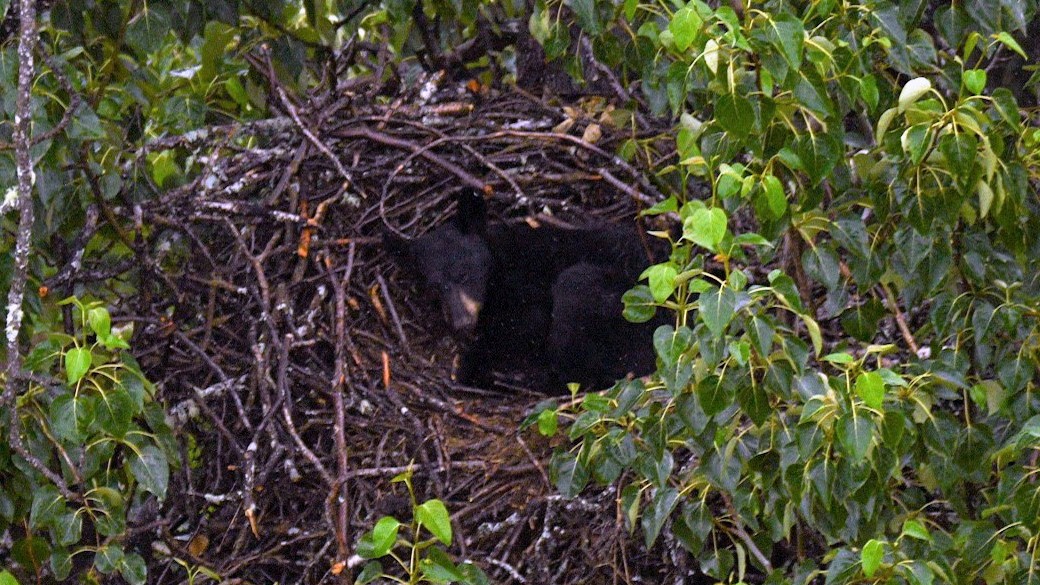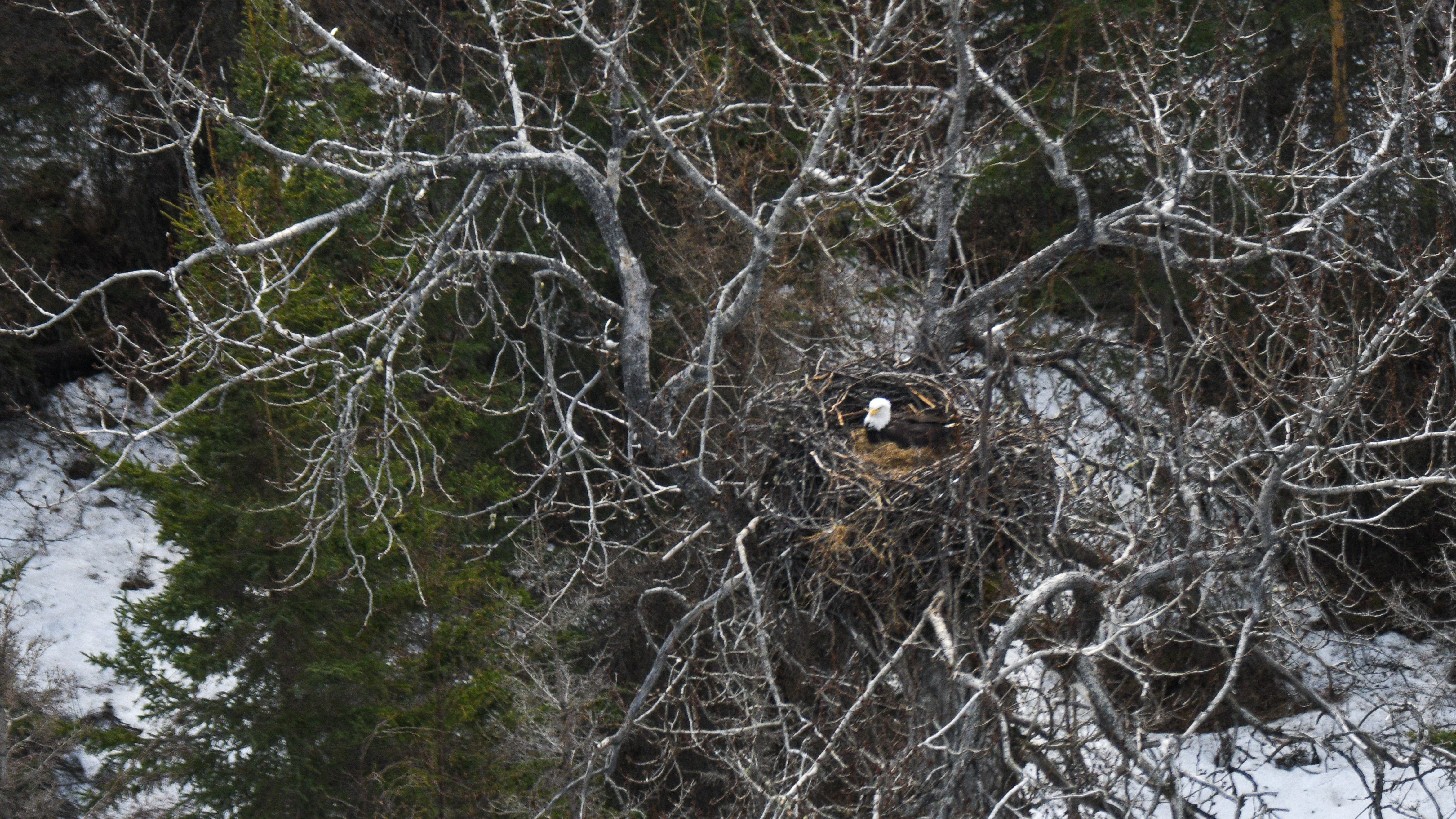
A black bear has been caught napping in an unlikely spot: the nest of a bald eagle. Researchers came across the sleeping bear while surveying eagle nests on a military base in Alaska.
Black bears (Ursus americanus) are known to occasionally take advantage of eagles' architectural work — and these invasions spell trouble for the birds and their young, according to the U.S. Fish and Wildlife Service (FWS).
"In the past, a few eagle nests have been raided by black bears with predictably bad results for the nesting eagles," FWS staff wrote in a Facebook post on July 21, adding that these incidents often result in young birds going missing.
Bears occasionally eat eagles' eggs and nestlings, said Stephen B. Lewis, a FWS wildlife biologist who led the nest surveys on Joint Base Elmendorf-Richardson (JBER) military base in southern Alaska. "It's hard to say how much bears invade eagle nests because we don't (can't) spend that much time monitoring to see it happen or have cameras to witness it," Lewis told Live Science in an email.
Related: Grizzly bear believed to have killed woman on Buttermilk Trail near Yellowstone National Park
During a helicopter survey in May, researchers spotted a female bald eagle (Haliaeetus leucocephalus) incubating an egg on the nest later occupied by the sleepy bear. A week later, the egg had been left out in the cold while both the female eagle and her mate busied themselves nearby.
"It wasn't clear if the nesting attempt had failed or if the female was just taking a break from incubating," Lewis said, adding that males would usually take over from females to keep the egg toasty, especially in cool places like Alaska. For that reason, Lewis suspects the nest "failed" in the spring, long before the bear crawled into it.

Bald eagles are Alaska's largest resident birds of prey and have wingspans of around 7.5 feet (2.3 meters), according to the ADFG. These raptors build the largest nests of any North American bird, with some nests measuring 8 feet (2.4 m) across and weighing more than two tons (1.8 metric tons).
These huge nests may also provide safe resting places for black bears that usually make "beds" on very steep slopes where other animals can't disturb them, Lewis said. "This nest isn't that far off from such a bear bed. It could have just happened to climb the tree and decided to take a nap."
Fishy smells wafting down from the nest may also have lured the bear. Eagle nests can be "rather smelly," because the fish adults catch for their young sometimes go uneaten. "Often that food isn't entirely consumed and ends up getting stomped into the nest or laying on the side and rotting," Lewis said. "Bears have incredible senses of smell so perhaps a bear is attracted to the smelly nest."
Bald eagles were listed as an endangered species across the U.S. in 1978, after their numbers plummeted due to habitat destruction, illegal shooting, pesticides and poisoning, according to the Alaska Department of Fish and Game (ADFG). Stronger protections have allowed populations to recover and monitoring is ongoing to assess the impact of other human disturbances, such as tourism and oil spills.







